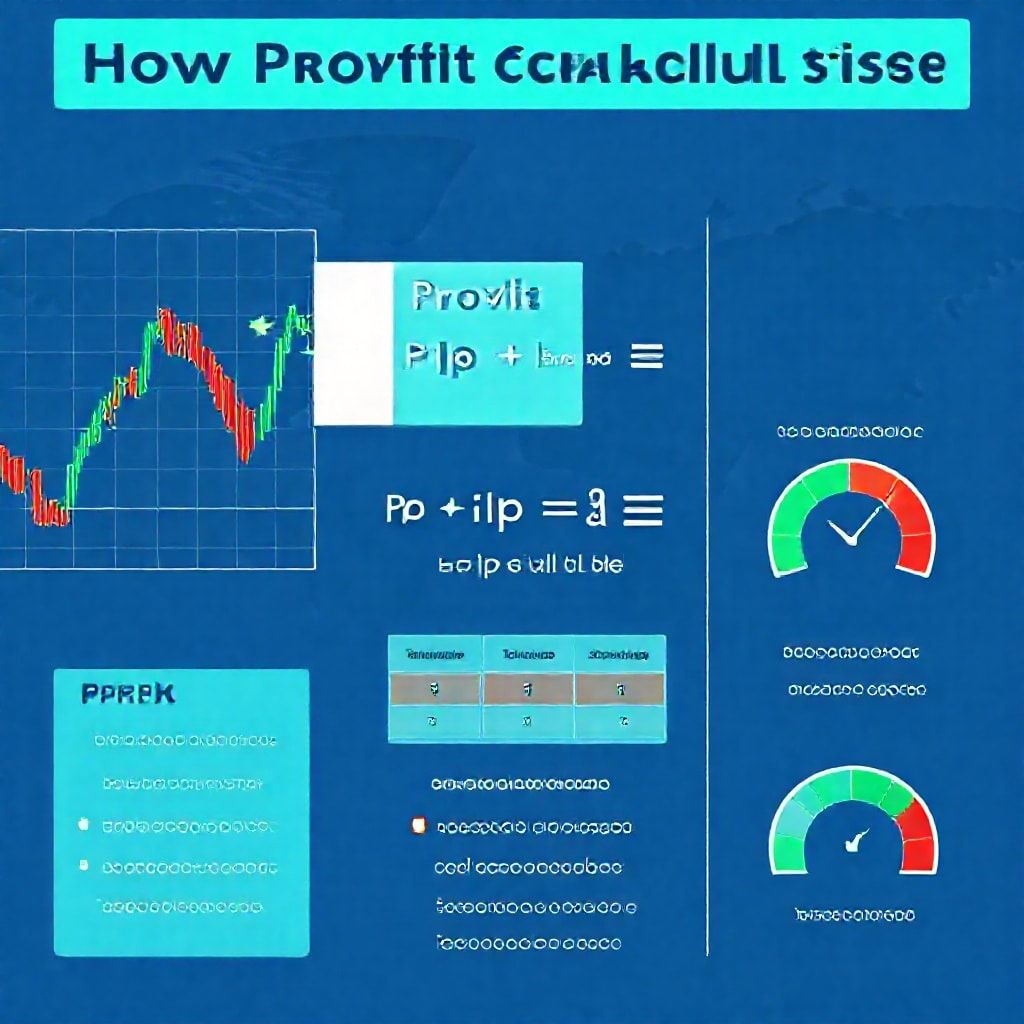How is profit calculated in Forex trading?
How is Profit Calculated in Forex Trading?
Introduction
Picture this: you’re at your desk, a pair of screens glow, and a chart shows EUR/USD inching higher. Profit in Forex isn’t just “price moved up.” it’s a precise math where opening price, closing price, position size, and cost elements all fight for a spot in the final number. This piece breaks down how the profit figure is built, then expands the lens to multi-asset trading, DeFi twists, and smart-trend ideas you can actually test in your trading routine.

Core principles of profit calculation
- Pips, lots, and value: The core idea is simple—the price change you capture, measured in pips, times how much you’ve bet (the lot size), equals raw profit before costs. In most pairs, a pip is the 4th decimal place; for USD/JPY it’s the 2nd decimal. A standard lot is 100,000 units; a mini lot is 10,000; a micro lot 1,000.
- Example to ground it: If you buy EUR/USD at 1.1000 and sell at 1.1050, you gained 50 pips. With a standard lot, that’s about $500 of gross profit (50 pips × $10 per pip). If you traded a mini lot, it would be $50; a micro lot, $5. Now toss in costs.
- Costs matter: spreads, commissions, and overnight swaps (rollover) eat into your profit. A tight spread can be the difference between a break-even trade and a winner, especially on fast-moving days.
- Account currency and pip value: If your account is USD-based and you’re trading EUR/USD, the pip value is straightforward. If the quote is in another currency, or you’re trading a different instrument, you convert the pip value into your account currency for the final number.
Costs and timing that shape profit
- Spreads and commissions: Every trade begins with the bid-ask gap or a fixed fee. Tight spreads help short-term players, while commissions matter more on high-frequency or high-volume strategies.
- Rollover and funding: Positions left open overnight incur interest differences. In slow markets, these can add up; in volatile markets, they can swing your daily P/L.
- Slippage: In fast markets, you may get a fill at a slightly worse price than expected. That gap shows up directly in your realized profit.
Leverage and risk posture
- Leverage amplifies both profit and loss. A 1:50 leverage lets you control a larger position with a smaller margin, boosting potential profits. The flip side is that the same move can wipe out a sizable share of your margin.
- Margin discipline: Treat margin as a safety net, not firepower. Use position sizing that keeps you within a small fraction of your total capital per trade, and always have a plan for stop-loss placement.
A practical scenario across asset classes
- Forex basics: The EUR/USD example above is a clean start. The same logic applies to USD/JPY, GBP/USD, or AUD/NZD, with differences in pip value and contract size.
- Stocks and indices: Profit is the price change plus dividends (for stocks), minus commissions. Indices and CFDs add financing costs, similar in spirit to forex swaps but tailored to the instrument.
- Crypto and commodities: Crypto pairs move 24/7 with higher volatility; profit depends on the same price difference, but with exchange-specific fees and sometimes funding rates. Commodities CFDs mimic forex logic but factor in roll costs tied to the commodity’s futures curve.
Web3 finance, DeFi, and the evolving landscape
- Decentralized finance brings perpetuals and tokenized futures to the table, with autonomous traders and smart-contract rails. Profit math remains price difference times exposure, but custody, settlement, and liquidity occur on-chain.
- Risks to watch: smart-contract risk, liquidity fragmentation, and regulatory shifts. The upside is programmatic transparency, lower counterparty risk in some models, and open access to leverage via decentralized venues—if you’re comfortable with the tech stack and risk controls.
- Slogans to keep in mind: “Profit math, not hype,” and “Trade the numbers, not the noise.” These phrases reflect the shift toward disciplined, quantitative thinking in a web3 world.
Future trends: AI, smart contracts, and safer scaling
- AI-driven trading: Machine learning can surface patterns, optimize entry/exit and adapt risk controls in real-time. The key is blending model signals with solid risk checks and human oversight.
- Smart contract trading: Automated strategies can operate with clear rules and verifiable on-chain execution, but you’ll want robust security audits, permission controls, and fallback plans.
- Practical guardrails: backtest across regimes, keep risk per trade small, and use secure custody for funds. In the end, the math of profit is a reliable compass, but it works best when paired with solid risk management and verifiable tools.
Tips to improve reliability and execution
- Break down each trade’s math before you pull the trigger: estimate gross profit, subtract estimated costs, and confirm margin impact.
- Use chart analysis tools to align with your risk limits: trend filters, support/resistance zones, and volatility indicators help set sensible stop-loss and take-profit levels.
- Diversify across assets with clear rules: a mix of forex, indices, and a capped crypto exposure can smooth drawdowns while preserving growth potential.
- Start with a practice loop: demo-test strategies, then scale with real capital only after consistent results.
Conclusion and invitation
Profit in Forex trading is a disciplined calculation—price moves, position size, and costs all add up. The same framework scales to stocks, crypto, indices, options, and commodities, and it adapts as DeFi, smart contracts, and AI reshape the arena. If you want to explore tools that help you track pip value, margin, and fees in real time, our platform’s charting and risk dashboards are built for this exact math. Remember: where profit meets discipline, growth follows.

